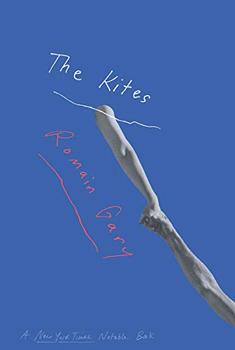Summary | Excerpt | Reviews | Beyond the Book | Readalikes | Genres & Themes | Author Bio

Critics' Opinion:
Readers' Opinion:
First Published:
Oct 2017, 384 pages
Paperback:
Sep 2019, 320 pages
 Book Reviewed by:
Book Reviewed by:
Lisa Butts
Buy This Book
Nowadays, the little museum in Cléry devoted to the works of Ambrose Fleury is only a minor tourist attraction. Most of its visitors drift over after lunch at the Clos Joli, a restaurant that guidebooks unanimously praise as one of France's most celebrated landmarks. These same guidebooks note the little museum's existence with the words, "worth a side trip." The museum's five rooms hold most of my uncle's work — the pieces that survived the war, the Occupation, the Liberation fighting, and all the vicissitudes and lassitudes our people has known.
Whatever their country of origin, all kites are born in the popular imagination, which is what gives them their slightly naive look; Ambrose Fleury's kites were no exception, even the final pieces he made in his old age bear that stamp of innocence and that freshness of soul. Despite lagging interest and the slim funding it receives from the municipal government, it's unlikely the museum will close its doors anytime soon — it's too much a part of our history. Mostly, though, its rooms are deserted. These days, the French are mostly looking to forget, not to remember.
The best existing photograph of Ambrose Fleury can be found at the museum's entrance. It shows him in his rural postman's outfit: his uniform and peaked cap, his big clodhoppers, his leather bag slung over his belly, standing between two of his kites, one in the shape of a ladybug, and one representing the fiery statesman Léon Gambetta,
whose face and body form the balloon and the basket with which he made his famous flight during the siege of Paris. There are lots of pictures of the "certified postman," as he was long known in Cléry — most visitors to his workshop snapped a photo or two, just for a laugh. My uncle posed willingly for these portraits. He was unafraid of ridicule, and didn't mind being nicknamed the "certified postman" or labeled a "harmless eccentric." If he was aware that the locals had dubbed him "crazy old Fleury," then he seemed to see it more as a sign of their admiration than of their scorn. In the nineteen thirties, when my uncle's reputation began to grow, Marcellin Duprat, the chef and owner of the Clos Joli restaurant, came up with the idea of printing postcards that showed my guardian posed in uniform among his kites, with the words, Cléry: Celebrated rural postman Ambrose Fleury and his kites. Unfortunately, the cards were done in black and white, and so they betray no hint of the kites' joyful colors and forms, none of their smiling bonhomie — none of what I'd call the knowing winks the old Norman was always aiming skyward.
My father was killed in the First World War, and my mother died shortly thereafter. The Great War also took the life of Robert, the second of the three Fleury brothers; my uncle Ambrose came back from it after taking a bullet through the chest. For the sake of clarity in this story, I should also add that my great-grandfather Antoine perished on the barricades during the Paris Commune. I do believe that this little feature of our past played a decisive role in my guardian's life, though nothing left a deeper mark on him than the names of his two brothers carved onto Cléry's war monument. The man he was before the Great War — people say he was quick to go the knuckle back then — had come home someone very different. Many found it surprising that a decorated combatant like my uncle would take every opportunity to express his pacifist sentiments, defend conscientious objectors, and condemn violence in all its forms, with a glint in his eye that was probably just a reflection of the flame burning at the Tomb of the Unknown Soldier. Physically, there was nothing soft or gentle about him. His sculpted features and cropped gray hair gave him a hard and ready look, with one of those big bushy mustaches that are usually qualified as "Gallic" — thank God the French have managed to hang on to at least some of their historical memory, if only by the hairs. His gaze was somber, which is always a good foil for merriment. It was generally believed that he'd come back from the war a little bit "touched," which explained the pacifism, as well as his funny passion for his kites: he spent every spare minute with his gnamas, as he called them. He had discovered this word in a book about Equatorial Africa, where apparently it refers to everything that has a breath of life in it: men and mosquitoes, lions and ideas and elephants. Most likely he chose to become a rural postman because his Military Medal and his two War Cross citations gave him special priority for restricted civil service jobs. Then again, maybe he felt this was a good line of work for a pacifist. Often, he would say to me, "If you're lucky, my little Ludo, and you work hard, then someday maybe you can get a nice office job with the postal administration, too."
Excerpted from The Kites by Romain Gary. Copyright © 2017 by Romain Gary. Excerpted by permission of New Directions Publishing. All rights reserved. No part of this excerpt may be reproduced or reprinted without permission in writing from the publisher.




Our wisdom comes from our experience, and our experience comes from our foolishness
Click Here to find out who said this, as well as discovering other famous literary quotes!
Your guide toexceptional books
BookBrowse seeks out and recommends the best in contemporary fiction and nonfiction—books that not only engage and entertain but also deepen our understanding of ourselves and the world around us.